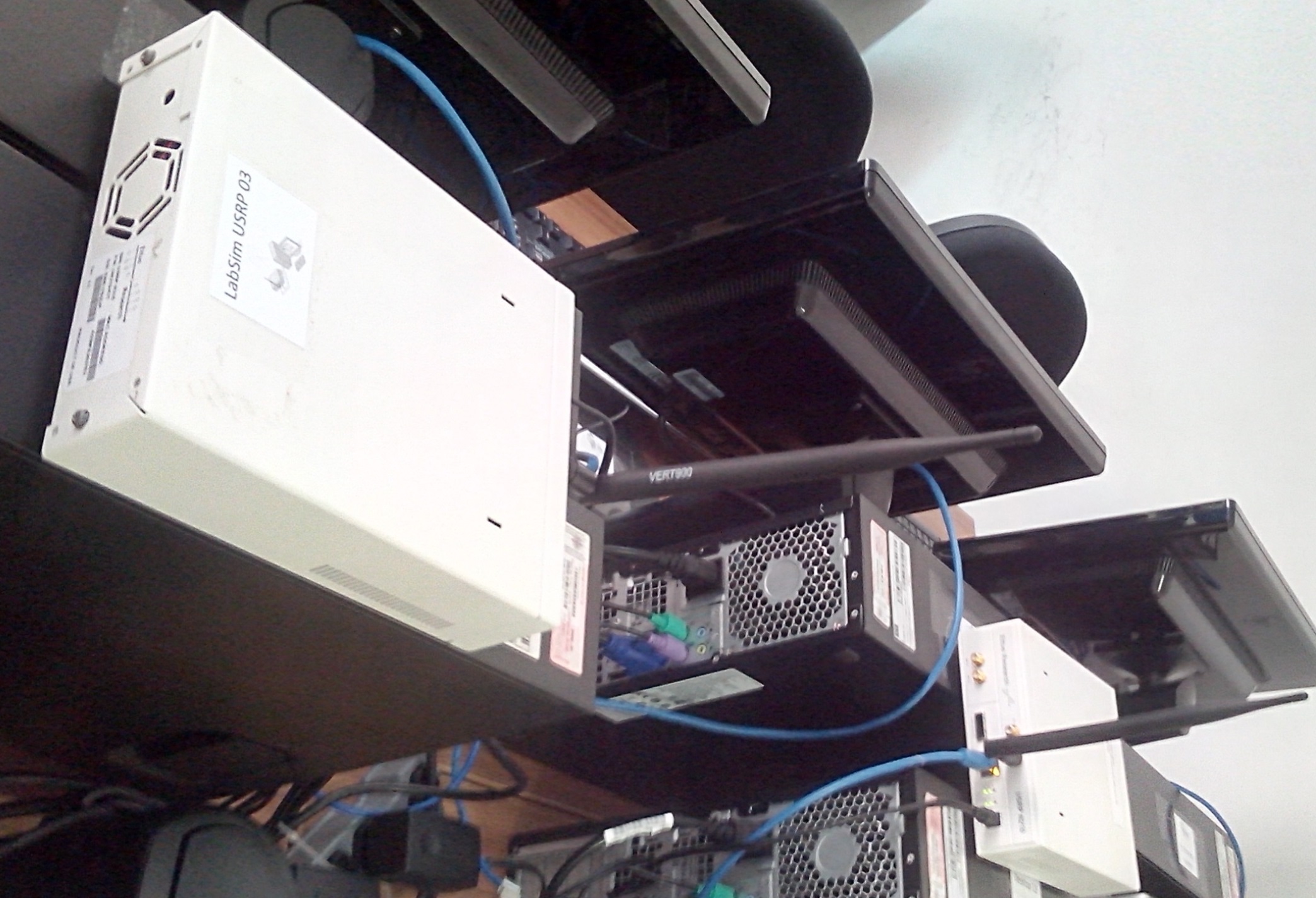
OFDM experiment using GNURadio and Matlab
The efficiency of data transmission has become fundamental in the field of telecommunication, and various types of communication systems have been created over the years, such as the OFDM system, which is responsible for the physical layer efficiency of commercial systems such as Wi-Fi (IEEE 802.11) and WiMAX (IEEE 802.16) Use. The purpose of this paper is to present results and comparisons of performance between different types of OFDM multiplexing properties such as the use of different types of digital modulations, subcarrier characteristics and guard interval. Software-defined radio prototypes are built using GNU Radio, and a real transmission with the USRP platform is performed.
OFDM
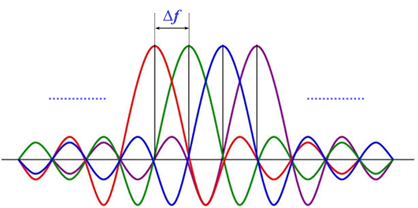
Over time, several transmission strategies emerged that allowed for greater effectiveness in communication. Among these schemes, OFDM (Orthogonal Frequency Division Multiplexing) was created in 1966 by Robert W. Chang when he published his work on the synthesis of the limited band of orthogonal signals for multi-channel information transmission.
OFDM is used both in local areas (WLAN) and in IEEE 802.11a-g (Wifi) systems, for both metropolitan networks and IEEE 802.16d-e (Wimax) systems too. OFDM is like FDM (Frequency Division Multiplexing) logic, however, the subcarriers are separated into the frequency orthogonally. They are superimposed on each other respecting the property of the orthogonality, therefore making good use of the band and making it much more efficient than the FDM. Orthogonality in the OFDM system means that it is not necessary to use filters to retrieve the transmitted information. However, a greater digital signal processing is required to separate the data of each overlapped subchannel.
MATLAB simulations
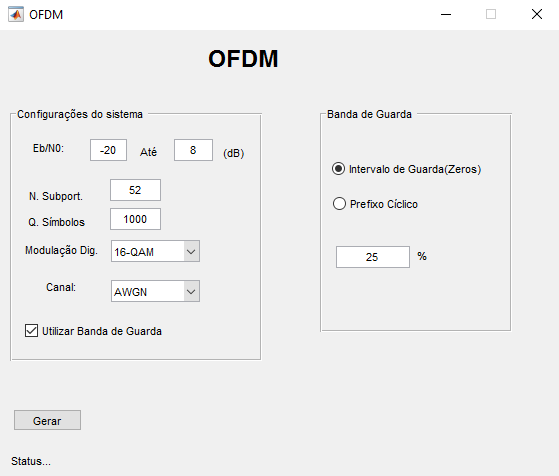
The code simulations generate logarithmic graphs that relate BER vs Eb/N0 to compare the bit error rate with the power efficiency for several different situations of the OFDM modulation process. The purpose of the simulations is to compare the theoretical performance graphs calculated with the simulated performance.
The simulations are based on IEEE 802.11a system specifications.
| PARAMETERS | SPECIFICATIONS |
| FFT Size | 64 |
| Subcarrier used Size | 52 |
| Guard Interval | 16 |
| Modulation | 16-QAM / BPSK |
| Numbers of OFDM symbols transmitted | 10000 |
OFDM without any Guard Interval
16-QAM 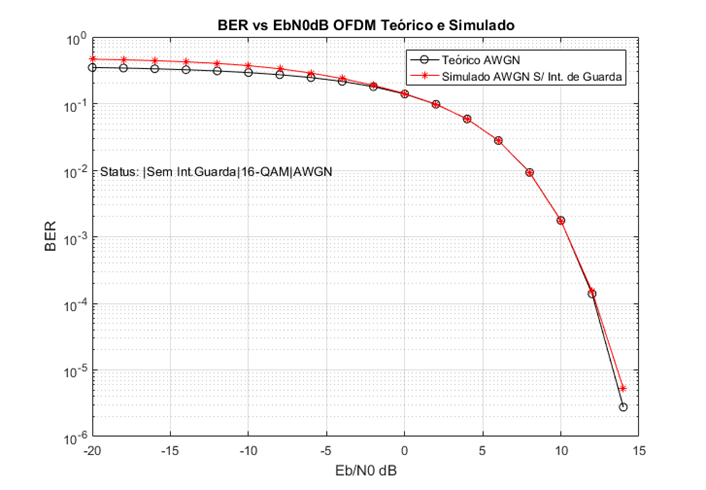 |
BPSK 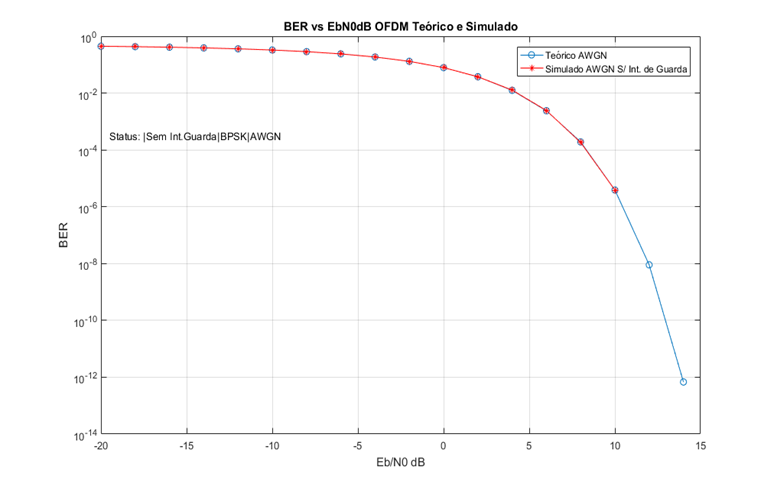 |
OFDM with Cyclic Prefix
16-QAM 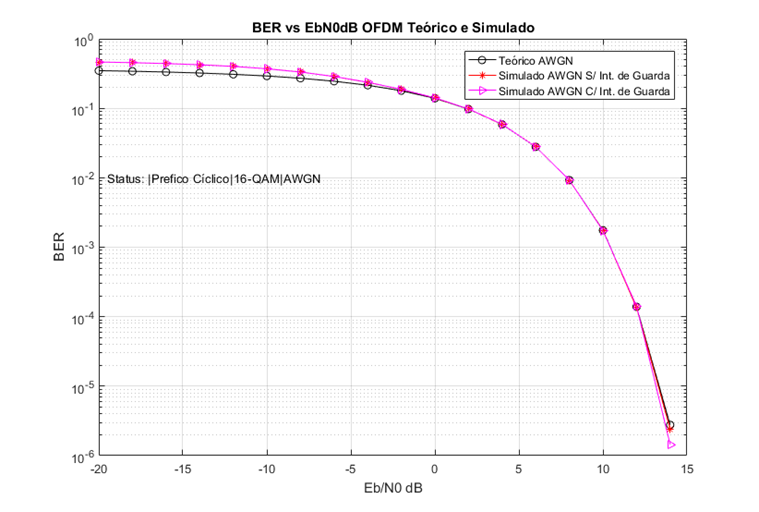 |
BPSK 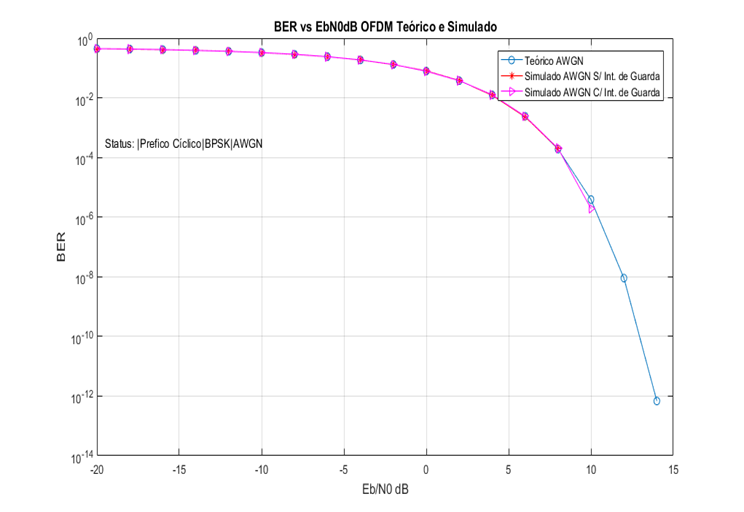 |
OFDM with Zero Padding
16-QAM 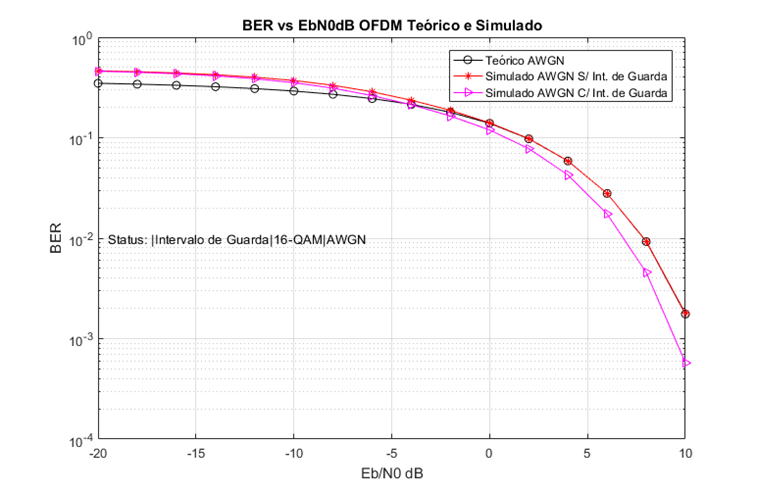 |
BPSK 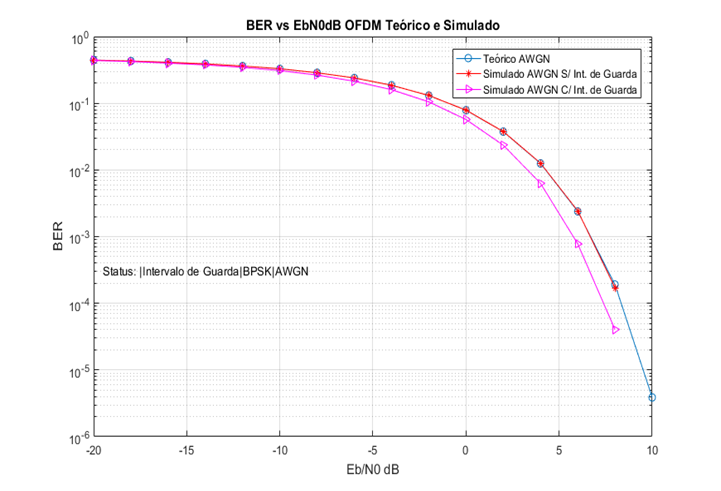 |
OFDM: AWGN and Rayleigh
16-QAM 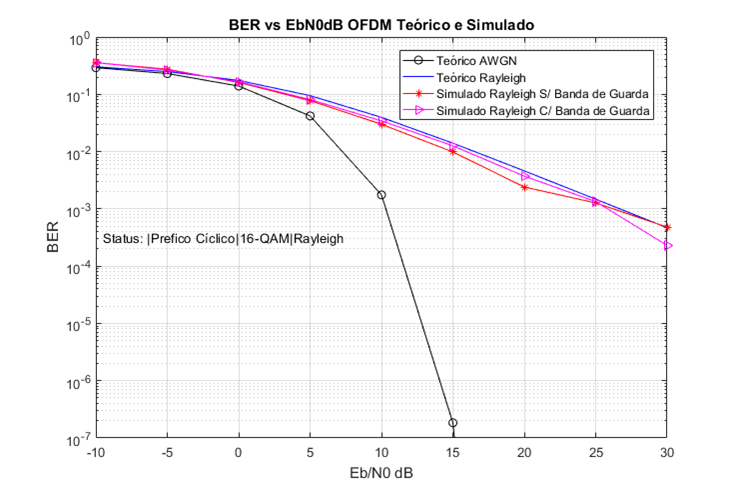 |
BPSK 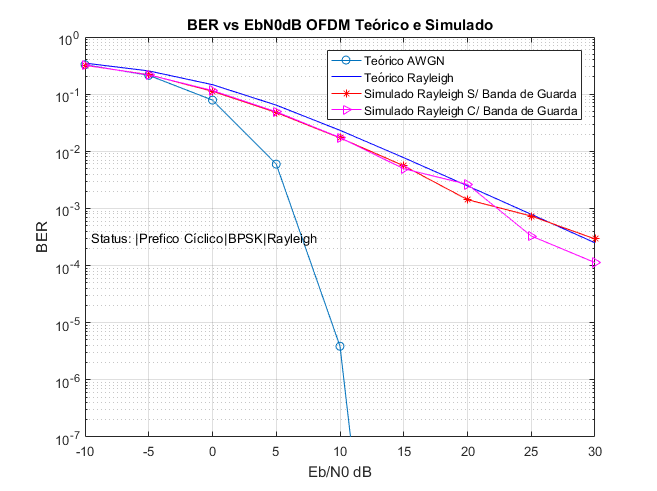 |
Practical experiment OFDM in a USRP N210 using GNURadio
GNU Radio is a free SDR and Open Source tool and it was developed in C ++ and generates editable and executable code in Python.
Universal Software Radio Peripheral (USRP) is a range of software-defined radios designed and sold by Ettus Research and its parent company, National Instruments. The USRP product family is intended to be a comparatively inexpensive hardware platform for software radio, and is commonly used by research labs, universities, and hobbyists.
USRP N210 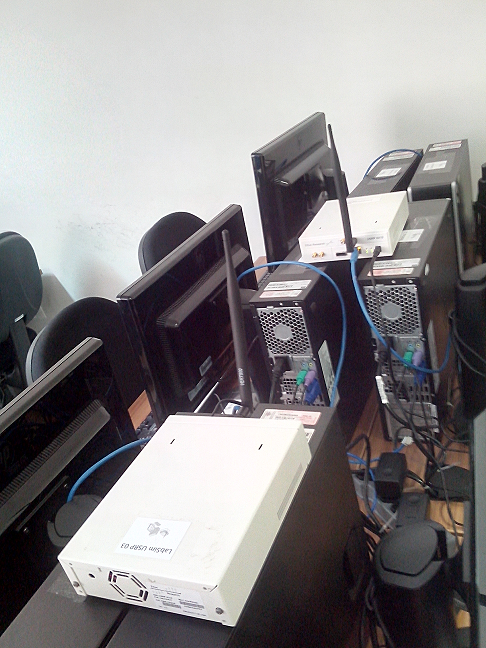 |
USRP N210 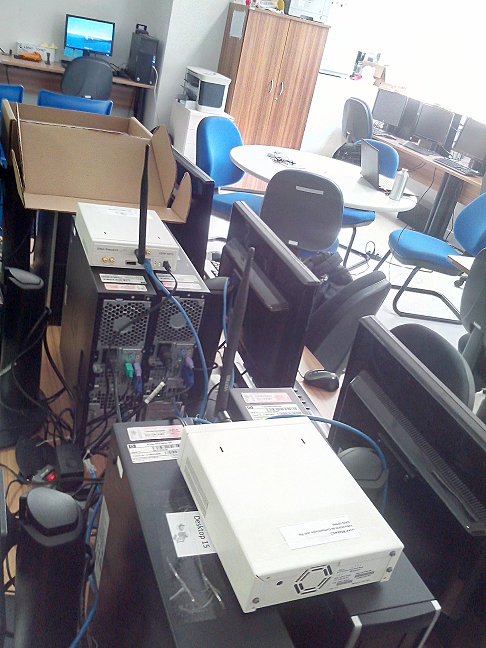 |
The experiment project was used two USRPs, the primary was the transmission datas and the second was the reception of the datas. The configuration of the OFDM multiplexing was: 64 subcarriers FFT, 16 Cyclic prefix and BPSK modulation.
Transmission 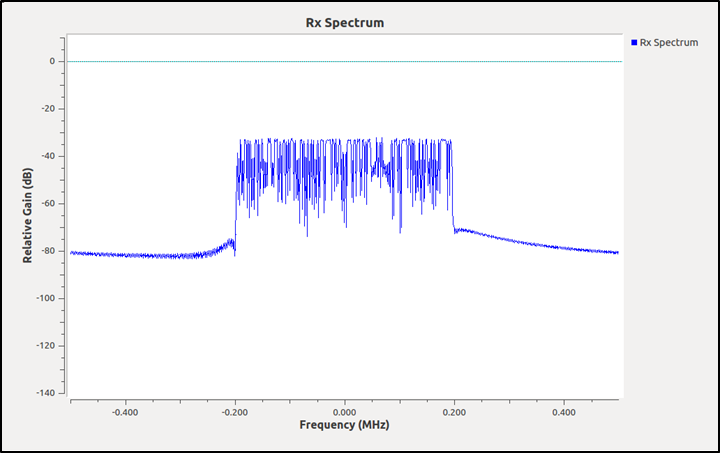 |
Reception  |